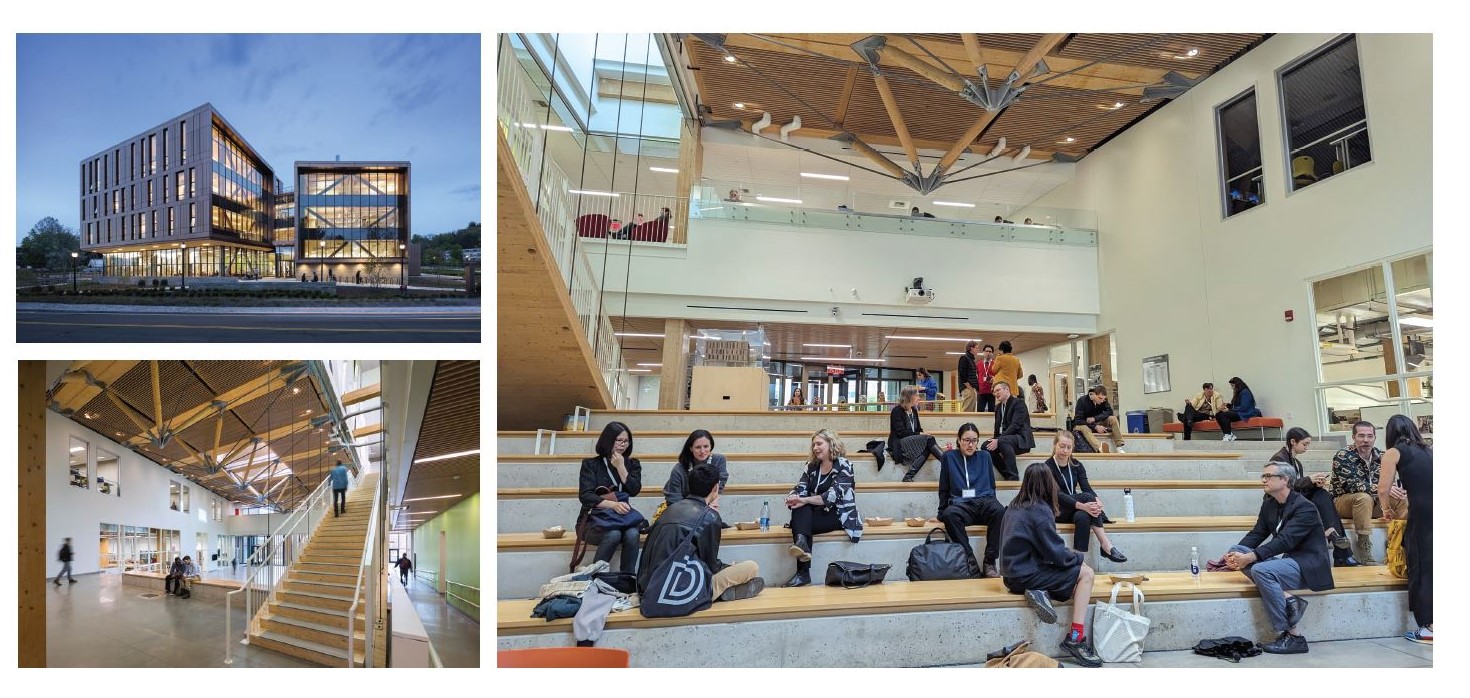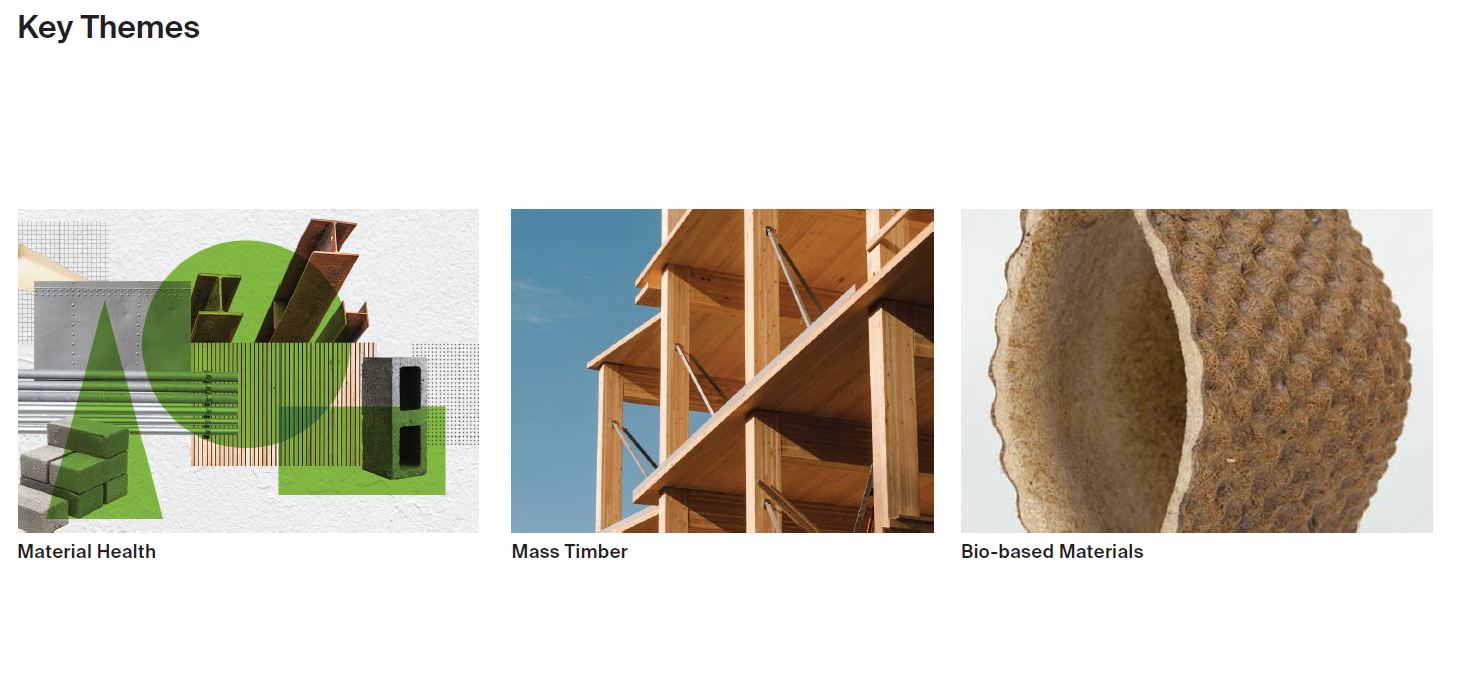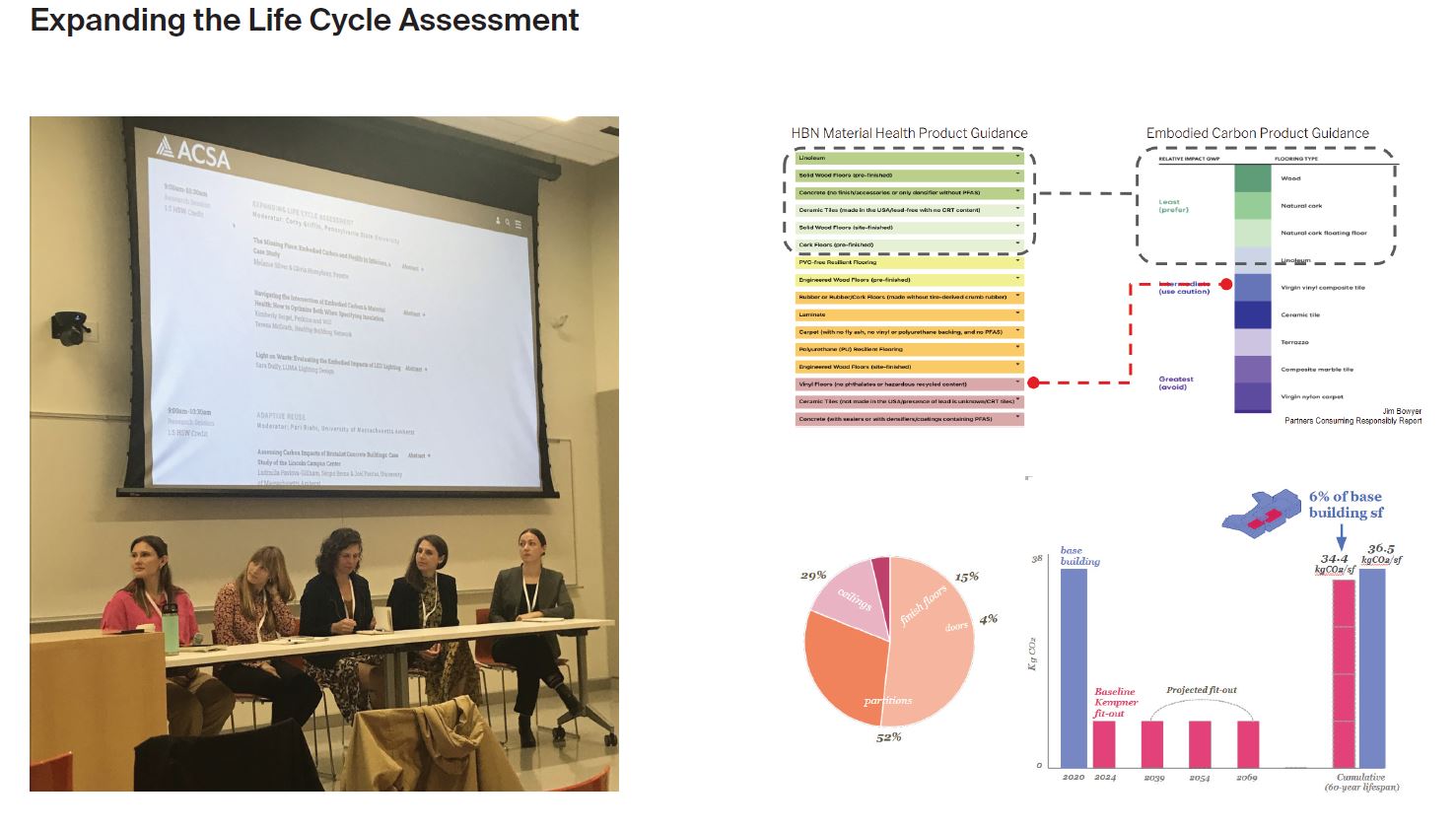Emerging in 2020, Intersections Research Conference was created with the intent to strengthen the connection between academia and design practices with a focus on climate action, research, and community engagement. The conference takes place at the University of Massachusetts Amherst and draws hundreds of like-minded individuals for three days of lively conversation.
The previously published LUMA white paper, Light on Waste: Evaluating the Environmental Impacts of LED Lighting, takes a hard look at the lighting industry and delves into how finite materials, energy intensive processes, shipping, and end-of-life treatment impact the environment. With the conference’s 2023 theme being material economies, LUMA lighting designer Sara Duffy joined the Intersections Research Conference on the ‘Expanding Life Cycle Assessment’ panel. Sara is one of four team members of the Light on Waste research paper.
Read below for Duffy’s key conference takeaways!
1) There is ample space for both literal and conceptual thinking.
Unlike other industry conferences that are often heavily focused on practicing professionals, Intersections Research Conference features members of architectural academia and university students. “The diverse audience helped with a discussion that was a mix of literal and conceptual,” says Duffy. “There was a variety of presentation types that kept the door open for iteration and collaborative discussion. Ultimately, we can’t have literal without space for conceptual ideation, and this was the place for that.”
2) People are excited to join the conversation.
“I joined a wonderful talk on material health that drew a substantial audience. By the end, individuals were sitting on the floor and the talk had turned into a large, roundtable style discussion,” says Duffy. “People were genuinely excited to join the conversation.” With other conferences being heavily product focused, the discussion-based nature was a refreshing variation. Breaks between presentations offered time to connect with other designers, discuss shared ideas, and create opportunities for future collaboration.
3) “I’ve never thought about that!”
“This sentiment was exchanged on multiple occasions,” says Duffy. Relating specifically to circular lighting and the embodied carbon impact of a luminaire, “It was one of the most common responses after seeing our presentation or chatting about why I was at the conference.” Coming from architects, researchers, and students alike, it’s a great reminder that these types of interaction are extremely important for the longevity of our industry and the health of our planet. What might be common knowledge to some is news to others and sharing resources is essential.
For additional information on LUMA’s Light on Waste research, download the full white paper here, or reach out for our AIA and GBCI accredited presentation.
- 1
- 2
- 3


